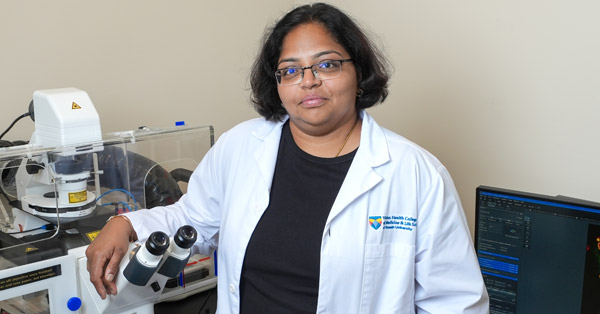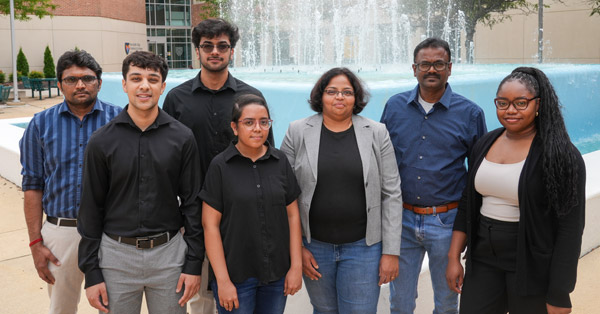Could magnesium be the key to heart health? Rowan researcher awarded $1.9M NIH grant to find out
Could magnesium be the key to heart health? Rowan researcher awarded $1.9M NIH grant to find out

A Rowan-Virtua School of Osteopathic Medicine researcher has received a $1.925 million grant from the National Institutes of Health (NIH) to explore how a common mineral—magnesium—might help prevent or even reverse heart failure.
Shanmughapriya Santhanam, Ph.D., associate professor of biomedical sciences, will lead a five-year study investigating how magnesium supports mitochondrial function in heart cells. Mitochondria, often called the “powerhouses” of the cell, produce the energy needed for nearly all cellular activities. When they malfunction, it can lead to serious health conditions, including heart disease.
“When people undergo cardiac surgeries, in some clinics, they give magnesium as a protective supplement—essentially, to make the mitochondria happy by giving magnesium so that the mitochondria control the calcium uptake and stop it from overloading and causing cell death,” Santhanam said. “So, one thing we will be doing is trying to understand that mechanism by which magnesium is going to protect the cells.”
The research focuses on two key proteins: Mrs2, which helps move magnesium into mitochondria, and MCU, which controls calcium entry. Too much calcium in mitochondria is linked to cell death and heart failure. Santhanam’s team will study how magnesium might prevent this overload by modulating MCU activity.
“In simple terms, the MCU becomes significantly activated during cardiac failure. We are investigating whether the administration of increased magnesium to the mitochondria has the potential to inhibit this hyperactivation of MCU,” Santhanam said. The grant’s future directions will facilitate the identification of the activator that enhances the influx of magnesium into mitochondria.
The project will use animal models to examine how changes in the Mrs2 protein affect magnesium transport and calcium regulation. The team also aims to identify a potential activator that enhances magnesium uptake—an advance that could lead to new therapies for a wide range of metabolic diseases, including diabetes, obesity, liver disease, and even Alzheimer’s.
Santhanam’s interest in mitochondria began during her postdoctoral research at Temple University, where she was part of a team that discovered the role of Mrs2 in mitochondrial function.
“All you have to do is observe the way one particular mitochondrion moves throughout the cell under a microscope,” she said. “Watch how it travels. Then, observe a mitochondrion under a disease condition and notice the different movements. You’ll feel like the mitochondria are talking to you.”
U.S. Rep. Donald Norcross, who represents New Jersey’s 1st Congressional District, offered his support for the project.
“This grant funding works towards ending heart disease, the leading cause of death in America, and is an important step toward saving lives,” Norcross said. “I commend Rowan researcher, Dr. Shanmughapriya Santhanam, for her work and dedication to minimizing this devastating disease. I will continue to do my part in Congress to improve health care for South Jerseyans and Americans everywhere.”
With this new NIH grant, Santhanam and her team are poised to uncover how a simple mineral could unlock powerful new treatments for some of the most challenging diseases of our time.
